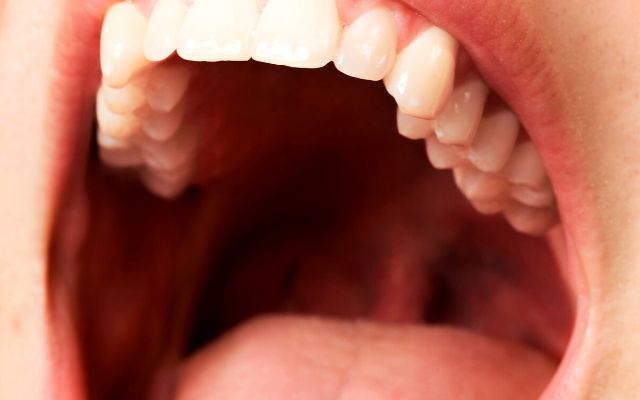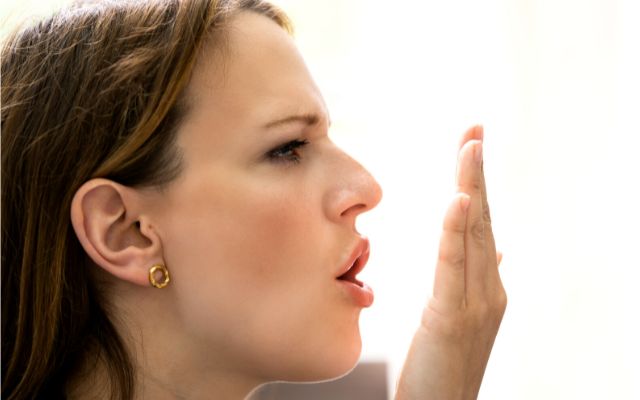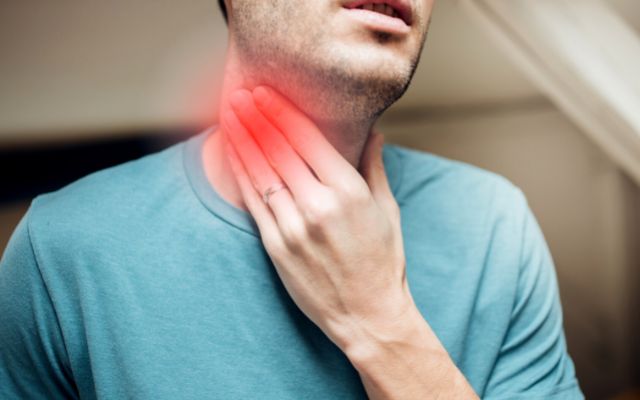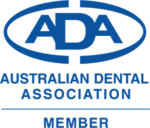Why Is the Roof of My Mouth Yellow? There are various reasons why the roof of your mouth may be yellow. However, some reasons, including jaundice, certain infections, and oral cancer, necessitate medical care. So, keep reading to learn more!
What is the roof of the mouth?

The palate, also known as the roof of the mouth, is the upper section of the mouth that divides the oral cavity from the nasal cavity. It is divided into two sections: the hard palate and the soft palate.
The hard palate
The hard palate is the bony front part of the roof of the mouth that separates the oral cavity from the nasal cavity. It helps with chewing and speech production, and any issues with it can affect a person’s ability to eat and speak properly.
The soft palate
The soft palate is the posterior (back) portion of the roof of the mouth that is composed of muscular tissue and connective tissue. It is located behind the hard palate and is not as rigid as the hard palate. The soft palate is responsible for closing off the nasal passages during swallowing to prevent food or liquid from entering the nasal cavity. It also plays an important role in speech production by helping to create certain sounds. The soft palate is movable and can be raised or lowered depending on the needs of the body.
Causes of Yellow roof of The Mouth

Similar to having a yellow tongue, dental health, germs, and other illnesses can all contribute to a yellow mouth roof.
Oral hygiene issues
Inadequate oral hygiene can lead to an accumulation of microorganisms in the mouth. The color of the interior of the mouth might change as these bacteria grow. The tongue and roof of your mouth may turn yellow as a result of this. Bad smell, swollen or bleeding gums, and discomfort when chewing are other signs of inadequate dental hygiene.
Mouth breathing or dry mouth
When the salivary glands don’t generate enough saliva, it results in xerostomia or dry mouth. There may be a medical explanation for this, such as frequent mouth breathing. Saliva serves to keep germs from growing in the mouth. Bacteria can proliferate and cause your mouth’s roof to become yellow if there isn’t enough saliva produced.
Throat thrush
An overabundance of yeast in the mouth causes oral thrush. The roof of the mouth may develop lumps and yellow spots as a result. A burning tongue, chapped lips, and a loss of taste are some further signs of oral thrush. Although oral thrush is usually not hazardous, it can become problematic if it spreads to other body regions.
A keratosis
Little, uncomfortable ulcers known as “canker sores” develop within the mouth, notably on the roof of the mouth. Canker sores can be yellow or red in hue. The roof of your mouth could seem yellow if you have canker sores there. Canker sores often have moderate symptoms and resolve in a few weeks. Canker sores that do not disappear after a few weeks need to be examined by a dentist or physician.
Herpes oral
A herpes outbreak called oral herpes is brought on by the HSV-1 virus. The inside or outside of the mouth may develop these herpes lesions: tonsil stones, dry mouth, medical attention, oral thrush, healthcare provider, sore throat, red spots, white streaks.
Jaundice
An accumulation of a yellow pigment called bilirubin results in a dangerous illness known as jaundice. The malfunction of the liver or gallbladder is what typically causes this accumulation. Your mouth’s roof might become yellow if bilirubin levels in your blood increase. The most typical signs of jaundice include flu-like symptoms, yellow eyes and skin, and yellow skin. In the event that you experience any of these symptoms, call your doctor straight once.
Medicaments containing bismuth.
An upset stomach is treated with a drug called bismuth subsalicylate. A typical drug containing bismuth is Pepto Bismol. Using drugs that include bismuth might cause your tongue to change hues, from yellow to black, following research Trusted Source. Your mouth’s roof may also become yellow as a result of it.
Mouthwashes that include oxidizing agents
Mouthwashes come in a wide range of variations. Oxidizing substances, including hydrogen peroxide, are used in certain mouthwash formulas. The roof of your mouth and your tongue may turn yellow after using this kind of mouthwash.
Cigarette smoke
Among other problems, tobacco smoke is a risk factor for poor dental hygiene. Smoking has been linked to black hairy tongues, which give the appearance of yellow on the roof of the mouth. Another risk factor for oral thrush is smoking. Your mouth’s roof may seem yellow if you have oral thrush spots.
Roof of Mouth Yellow Symptoms

The roof of your mouth turning yellow might indicate an underlying illness if more symptoms start to occur: yellow tongue, bad breath, canker sores, a bacterial infection.
The roof of the mouth is yellow and white
- The roof of the mouth may develop areas of yellow and white due to oral thrush.
- White patches in the mouth might result from the disorder leukoplakia. Because it can progress to oral cancer, this disease is more dangerous.
The yellowish roof of the mouth has red dots on it
- Red blisters on the roof of the mouth are one symptom of oral herpes. These blisters may include yellow pus depending on the stage of the epidemic.
- Infection with hand, foot, and mouth
- The viral infection thrush may result in red spots developing on the roof of the mouth.
Having a painful throat and a yellow roof of the mouth
- Sometimes oral thrush can progress to esophageal thrush, which results in a painful throat.
- A hurting, scratchy throat is a symptom of a bacterial or viral infection known as pharyngitis. A painful throat is brought on by strep throat, a bacterial illness.
- Eating and drinking might be challenging when you have these throat infections. The roof of the mouth may appear yellow as a result of bacterial buildup.
Some Treatment Options

The specific treatment options for issues related to the roof of the mouth depend on the underlying cause of the problem. Here are some examples:
Oral hygiene
Maintaining good oral hygiene, including brushing twice daily and flossing once a day, can help prevent or treat many issues related to the roof of the mouth.
Medications
In some cases, medications such as antifungal or antibacterial medications may be prescribed to treat infections or other conditions.
Surgery
In cases where structural abnormalities are present, surgery may be necessary to correct the issue. This can include procedures to repair a cleft palate, remove tumors, or address other physical abnormalities.
Speech therapy
For issues related to speech production, speech therapy may be recommended to help improve articulation and enunciation.
Lifestyle changes
Certain lifestyle changes such as quitting smoking or avoiding alcohol can also help improve issues related to the roof of the mouth.
Yellowish Roof of Mouth Prevention
Prevention of a yellowish roof of the mouth primarily involves good oral hygiene practices. Here are some tips to prevent discoloration of the roof of the mouth:
- Brush twice daily
- Floss daily
- Rinse with mouthwash
- Quit smoking
- Limit alcohol consumption
- Dental checkup
Conclusion
In conclusion, a yellowish roof of the mouth can be a concerning issue that may be caused by poor oral hygiene or more serious underlying conditions. To prevent and treat discoloration of the roof of the mouth, it is important to practice good oral hygiene, quit smoking, limit alcohol consumption, and visit your dentist regularly for checkups and cleanings.
At Spring Orchid Dental, we are committed to providing high-quality dental care to our patients in Bassendean and the surrounding areas.
Our experienced team of dental professionals can help identify and treat any oral health issues, including discoloration of the roof of the mouth.
FAQs
Can you stop teeth grinding on your own?
It may be possible to stop teeth grinding on your own by practicing relaxation techniques, avoiding stimulating substances before bedtime, and improving sleep hygiene. However, it’s important to address the underlying causes of teeth grinding and seek professional treatment if necessary.
Do teeth regrow following grinding?
Teeth cannot regrow following grinding as the tooth structure lost due to grinding is irreversible. Grinding can cause wear and tear of the enamel, leading to tooth sensitivity and possible damage to the underlying dentin layer. If left untreated, it can lead to further complications such as tooth fractures and cracks, which may require restorative procedures such as fillings, crowns or even extractions.
Does everybody clench their teeth during the night?
Researchers believe that 12 to 31% of adults grind their teeth at night, with the majority going undetected. Up to fifty percent of children may experience teeth grinding. This is a curable epidemic that we do not have to accept as a way of life.
What Is Normal Roof of Mouth Color?
The roof of the mouth, or palate, is typically a shade of pink. “Normal” can range from light to darker pink, and some people may have harmless pigmentation or freckles. However, unusual changes like white or red patches or sudden dark spots could indicate an underlying condition and should be checked by a healthcare professional.
Why is the back of my throat yellowish?
The yellowish color at the back of your throat could be due to factors like infections, post-nasal drip, smoking, inflamed tonsils, or poor oral hygiene. If concerned, book an appointment with Spring Orchid Dental for a proper evaluation of your case.





